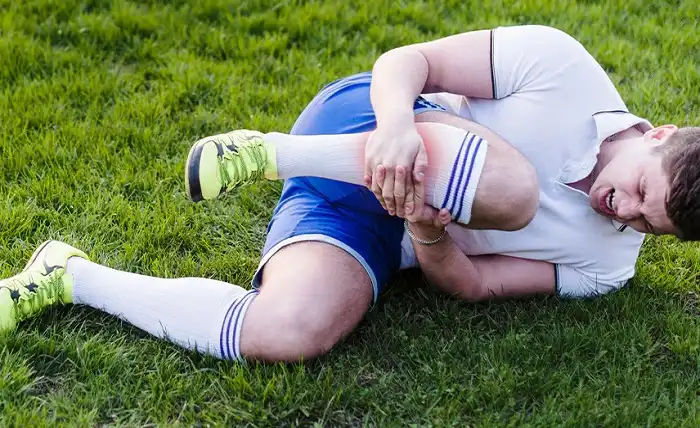How to Prevent and Treat Turf Burn: A Guide for Soccer Players

Turf burn is a common injury that soccer players can suffer from when they play on artificial turf. It is a type of abrasion that occurs when the skin rubs against the rough surface of the turf, causing friction and heat. Turf burn can be very painful and can lead to infection if not treated properly. In this blog post, we will explain what causes turf burn, how to prevent it, and how to treat it if you get it.
What Causes Turf Burn?
Turf burn is caused by the combination of three factors: speed, force, and surface. When a soccer player slides, tackles, or falls on the turf, they are moving at a high speed and applying a lot of force on their skin. The surface of the artificial turf is made of synthetic fibers that are abrasive and can tear off the top layer of the skin. This results in a wound that looks like a raspberry or a scrape. Turf burn can affect any part of the body that comes in contact with the turf, but it is more common on the arms, legs, knees, elbows, and hips.
How to Prevent Turf Burn?
The best way to prevent turf burn is to avoid sliding or falling on the turf as much as possible. However, this is not always realistic or feasible in a competitive game. Therefore, soccer players should take some precautions to protect their skin from turf burn. Here are some tips:
- Wear protective clothing. Long sleeves, pants, socks, gloves, and shin guards can cover the exposed areas of the skin and reduce the friction and damage from the turf. Some soccer players also wear tape or bandages on their arms or legs to create a barrier between the skin and the turf.
- Use lubricants or moisturizers. Applying a thin layer of petroleum jelly, lotion, or cream on the skin can help reduce the friction and heat from the turf. However, be careful not to use too much or too often, as this can make the skin slippery or clog the pores.
- Stay hydrated. Drinking enough water can help keep the skin moist and elastic, which can prevent it from cracking or tearing easily.
- Choose a good quality turf. Not all artificial turfs are created equal. Some are softer, smoother, and more natural than others. Look for turfs that have rubber or sand infill, which can cushion the impact and reduce the abrasion from the fibers.
How to Treat Turf Burn?
If you get turf burn, you should treat it as soon as possible to prevent infection and promote healing. Here are some steps to follow:
- Clean the wound. Rinse the wound with clean water and gently pat it dry with a sterile gauze or cloth. Remove any dirt, grass, or debris from the wound with tweezers or your fingers. If the wound is bleeding, apply pressure with a clean gauze or cloth until it stops.
- Apply an antiseptic or antibiotic ointment. This can help prevent infection and soothe the pain. You can use over-the-counter products such as Neosporin or Bacitracin, or natural remedies such as aloe vera gel or honey.
- Cover the wound with a dressing. This can protect the wound from bacteria and dirt, and keep it moist and cool. You can use adhesive bandages, hydrogel dressings, or silicone gel sheets. Change the dressing daily or as needed.
- Monitor the wound for signs of infection. If you notice any redness, swelling, pus, fever, or increased pain in the wound area, you should see a doctor immediately. You may need antibiotics or other treatments to clear the infection.
Conclusion
Turf burn is a painful and annoying injury that soccer players can get from playing on artificial turf. It is caused by friction and heat from rubbing against the synthetic fibers of the turf. To prevent turf burn, soccer players should wear protective clothing, use lubricants or moisturizers on their skin, stay hydrated, and choose a good quality turf. To treat turf burn, soccer players should clean the wound, apply an antiseptic or antibiotic ointment, cover the wound with a dressing, and monitor it for signs of infection.
We hope this blog post has been helpful and informative for you. If you have any questions or comments about turf burn prevention or treatment, please feel free to leave them below. Thank you for reading!
Read more about: appkod.org




